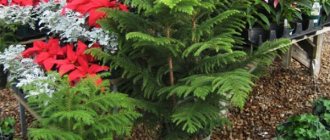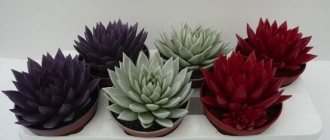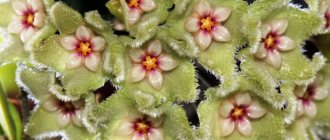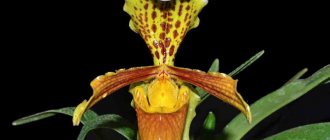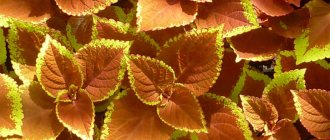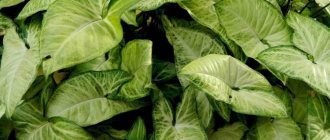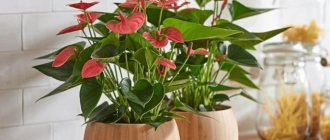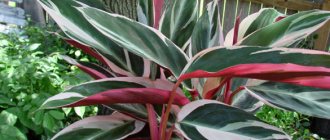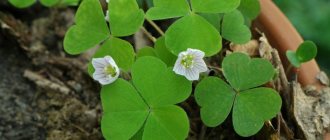Orchids are outstanding domesticated plants. Their beauty and grace are unique, and minimalism combined with magnificent flowering leaves no one indifferent. Since the century before last, many species were brought to Europe that perfectly adapted to home living conditions. A special place is occupied by the genus Paphiopedilum or slipper orchid.
The unusual appearance makes this flower very popular. In this article we will talk about caring for Paphiopedilum at home.
general information
This type of orchid is considered to be an unpretentious flower to care for. The Paphiopedilum orchid belongs to the Cipripediaceae family. The name comes from the word Paphos - this is the city, according to ancient Greek legends, the homeland of the goddess Venus; this flower is also called Venus's slipper. The homeland of this beautiful plant is the Indian subtropics. In nature, this orchid often grows on or between fallen or felled trees. The external structure of this plant is simple - a rosette of leaves and a root system.
General information
Guzmania belongs to the evergreen epiphytes of the bromeliad family. Almost all representatives of this family are grown for their bright bracts. They have green or variegated leaves with a solid edge up to 45 cm long. They fit tightly to each other, forming a rosette in which moisture accumulates, nourishing the entire flower.
Exactly in the middle a peduncle is formed on which inconspicuous flowers appear over time. The beauty of the indoor plant is emphasized by the bracts, which form a bright inflorescence. The root system is not developed; it only attaches the trunk to the soil.
Guzmania blooms for a long time. 12 to 18 weeks from two years of age. But after it, it gradually weakens and then fades altogether, so its “offspring” - the shoots - must be taken care of in advance.
Variety of species
There are about a dozen species of Paphiopedilum in stores that sell orchids. Here are the main types of Paphiopedilum:
- Paphiopedilum appletonianum (Appleton's) is a large hybrid up to 40 centimeters high with beautiful and fragrant green-purple flowers. Their diameter reaches 10 centimeters. The marbled pattern is very clearly visible on the leaves; they are belt-shaped. This beautiful orchid usually blooms in spring.
- Paphiopedilum Maudiae (Paphiopedilum Maudi) is the first hybrid that has become very popular among gardeners. The leaves are collected in neat rosettes with a checkered pattern. The flower also has stripes and is large, about 10 centimeters in diameter. It is usually white, but now there are hybrids with wine-red flowers. Its hybrid, Paphiopedilum americana, is also in great demand.
- Paphiopedilum Emerson is a small hybrid up to 20 centimeters high, but with one very large flower, 8 to 11 centimeters in diameter. The lip is orange-yellow, and the lip itself is white. The leaves of this species reach a length of 25 centimeters and are light green.
- Paphiopedilum bellatulum (bellatulum) - was discovered in 1888 in India. Its leaves grow up to 15 cm in length and 5 cm in width. Their lower surface is purple and their upper surface is covered with dark spots. The flowers are large, up to 9 cm in diameter. There can be up to 2 pieces. Usually one. The colors of the flowers range from white to pale yellow. With brownish-purple specks.
- Paphiopedilum niveum has variegated green leaves, the color of their lower surface is burgundy. The peduncle reaches 20 cm in height and one white flower with barely noticeable specks blooms on it.
Pruning fuchsia
Growing, Caring for fuchsia 2 comments
The end of winter is the time to start replanting and pruning adult fuchsias. During the winter, plants stretch out and need our attention. Let's transplant the fuchsia into fresh soil, trim the crown and prepare the plant for the new season.
Similar articles and video tutorials:
- About pruning fuchsia after wintering in an apartment
- About pinching cuttings to form fuchsia
So, here are the fuchsias that spent the winter in my cold, dark room in a wooden house.
Since the fall, I have shortened their shoots a little. Due to low temperatures, these fuchsias have lost their leaves for the winter. This is fine.
Flower care
Paphiopedilums are not very capricious orchids, but caring for them at home still requires attentiveness and stability from the owner. You cannot leave your pet unattended for a long time. Her health is constantly monitored and involved in every stage of her life.
Temperature and lighting
Paphiopedilum species' temperature preferences vary. There are heat-loving species and those that are accustomed to moderate temperatures. All flowers with variegated foliage love warmth. Bellatulum is a cold-resistant species.
For heat-loving species, summer temperatures vary between 23-28 degrees, and winter temperatures, between 18 and 23. The daily temperature difference must be maintained at 5 degrees. Representatives that are adapted to lower temperatures, for example, bellatulum, prefer temperatures up to 22 degrees in the summer and develop well at 17 degrees in winter.
Important. Constantly high and constantly low temperatures are detrimental to red slippers. They cause diseases of the root system, yellowing of foliage and ultimately death.
Representatives of the Cypripediaceae family grow well in the shade, but if the owner of the beauty wants his red shoe to bloom and delight with rapid development, then it is better to organize diffused lighting. The optimal daylight hours are considered to be 14 hours. During the flowering period, Paphiopedilums are very demanding on the amount of light. In winter, additional lighting is provided.
Important. If the flower does not have enough light, then it will wither and stop developing. There will be a period of rest, the way out of which can be provided by additional lighting.
Watering Paphiopedilum
The Lady's slipper orchid loves water. Under no circumstances should the soil be allowed to dry out completely. As with other representatives of the orchid family, watering rules imply carefully applying water to the surface of the substrate, and not to the growth point, which can lead to rotting of the root system. Water from a fine-stream watering can is evenly applied to the surface of the soil until water begins to flow from the holes in the container. The next watering is carried out when the soil becomes barely damp to the touch, but not dry .
Important. After surface watering, carefully wipe all the axils of the leaves so that no moisture remains there, because this leads to rotting.
One of the most successful ways to water these flowers is watering through a tray:
The container with Paphiopedilum is placed in a tray with water. With this method of irrigation, the quality of the drainage system and the composition of the soil play an important role. If the soil is moisture-absorbing, then the watering time is approximately 60 minutes, if not, then about 15.
Humidity
Originally from tropical forests, the Venus flower loves humid climates. At home, it is not so easy to organize humidity at 70-80%, especially in winter, because the heating is on, which dries out the air greatly. But there is a way out. You can use humidifiers, or place the flower and pot in a wide container filled with damp material, such as moss.
Important. Humidity is measured with a device called a psychrometer. There are 2 thermometers on it, one of which shows the room temperature, which is very convenient.
Soil and container
The main requirements for soil are its fineness. The ingredients should not include huge pieces of bark or large stones. Here are examples of compositions:
Simple:
- Charcoal – 1 part.
- Pine bark – 5 parts.
Average:
- Charcoal – 1 part.
- Moss – 2 parts.
- Pine bark and wood chips – 5 parts.
One more example:
- Pine bark – 5 parts.
- Moss – 1 part.
- Charcoal – 1 part.
- Expanded clay and pumice - drainage.
Important. Drainage is extremely important because it is what ensures the outflow of excess fluid. Good drainage properties also provide air access to the roots of the flower.
Since Paphiopedilums are semi-epiphytes, they can also be planted on a block. To do this, take a piece of wood, make a hole in the middle and attach a wire in it that will hold the flower. Then the piece is hung and the flower is fixed on it. The roots are carefully laid, sometimes covered with moss.
Important. With this method of strengthening the flower, the method of watering changes. It is carried out by spraying the roots.
A pot is chosen with transparent walls and holes on the bottom and sides. This provides visual control of root health and humidity in the container.
After Paphiopedilum blooms, it is recommended to completely cut off the peduncle, because representatives of this species usually produce new ones. However, do not remove the flower stalk immediately after flowering, because if it remains healthy for a while, the next phase of color will likely begin soon.
How to water Guzmania?
Guzmania is a tropical plant that requires not only moist air, but also soil. In the spring, when the activity of the green pet increases, the crop is provided with moderate watering and fertilizing. But at the same time, they carefully ensure that water does not stagnate in the pot and tray, which threatens to cause rotting of the roots and base of the rosette.
A plant that naturally receives moisture only from precipitation does not react well to tap water and may even die from it. Therefore, before watering the guzmania, the water must be settled or passed through a softening filter. In addition, the owner of a tropical crop needs to know that in the summer, moisture is also poured into the central part of the plant’s rosette. Fertilizing the crop can be done in the same way.
As fertilizers for guzmania, it is more correct to take balanced ready-made products for bromeliads or use fertilizers for domestic crops with a low nitrogen content. An excess of this element can be detrimental to the plant. It is undesirable for the fertilizer to contain calcium nitrate and superphosphate.
The water in the outlet is replenished as it absorbs and evaporates, and once every two months it is completely drained and replaced with fresh water.
In winter, moisture is removed from the rosette to prevent rotting of the base of the foliage. With proper watering, the leaves of the plant have good tone, do not dry out and do not turn yellow for a long time.
Transplanting Paphiopedilum
This procedure causes severe stress to the plant, because the main method of propagation of this species is by dividing the bush. The plant must be well developed and completely healthy. Stages:
- Immediately after the flowering period, the resting phase begins. At this stage, it is necessary to visually assess the ability of the bush to divide. Each separated part must have at least 3 shoots and its own roots.
- Division. A sterilized and well-sharpened instrument is taken, which is used to cut off. The sections are rubbed with charcoal or treated with an antiseptic.
- Then the mother plant is strengthened in the middle of the old pot and covered with new soil, and the separated part is strengthened in a new container and also covered with substrate. You can pour it up to the growth point, but not higher
Important. The temperature after transplantation does not exceed 22 degrees. The first watering is carried out after 2 weeks.
How to transplant guzmania indoors?
Guzmanias are sold already in bloom, so after purchasing the plant, you should not immediately replant it. It is better to do this after a couple of weeks, when the flower has acclimatized a little.
To make your green pet comfortable and to care for your guzmania, as in the photo, simple and effective, you should choose a wide, but not deep, pot.
A drainage layer is made at the bottom of the container, and a ready-made mixture for bromeliads is used as a substrate. You can select the soil yourself using:
- humus;
- peat;
- coarse sand;
- turf soil;
- loam.
The components are mixed in equal parts, then crushed and steamed pine needles, sphagnum and small pieces of charcoal are added to the substrate for looseness and airiness.
An adult plant is transferred from an old pot to a new one very carefully, trying to preserve all existing roots. The rosette is not buried, and the soil is carefully compacted after replanting. Guzmania plants are incredibly attractive, which, as in nature, are planted in a hole on a piece of driftwood, or used in a composition with bark or moss. In this case, the rosette will have to be additionally fixed with wire until the roots of the guzmania are fixed and can provide a strong position for the flower.
Unfortunately, the life of an adult rosette ends when the peduncle withers. But there is no need to despair. If guzmania is cared for correctly, as in the photo, the plant retains the juiciness and splendor of the rosette throughout its life, blooms and produces young shoots. Small guzmanias usually appear at the base of a large rosette, which are easy to plant once they have acquired their own roots. It is best to do this in the spring at the beginning of the seasonal awakening.
In order for the “babies” to grow faster and better, the peduncle that has begun to fade is cut off from an adult plant. This measure will save Guzmania energy and allow you to obtain planting material of excellent quality.
From the moment the shoots appear until they bloom, at least 2–3 years must pass. In this case, the young guzmania will have to be artificially pushed to form buds. To do this, the plant is transferred to a room where the temperature is increased to 26–27 °C, and after some time it is returned to its usual conditions.
Diseases and pests
Like all other representatives of the orchid family, the red slipper suffers from diseases and pests. Main diseases:
- Root atrophy. Due to improper watering and temperature.
- Yellowing of leaves. The reason is direct sunlight and very high temperatures.
- Root rotting. A very serious disease that can be treated by root sanitation and transplantation.
Main pests:
- Whitefly. Small white insects that are destroyed with insecticides. Venus's slippers are very sensitive to them.
- Thrips. Inconspicuous insects that form black spots on the foliage. Destroyed with insecticides.
- Scale insects. They create waxy shields above themselves, which look like white spots or tubercles. Treated by mechanical removal and treatment with insecticides.
In this article we talked about a beautiful type of orchid - Paphiopedilum.
Poinsettia propagation by seeds
Few people know that pruning is not so necessary to propagate poinsettia at home. By pollinating the tiny flowers yourself, you can wait until round, almost black seeds form and ripen.
It is more convenient to transfer pollen using a cotton swab or a thin soft brush. At the same time, it is important to touch each flower and make sure that the grains get where they need to be.
After some time, greenish seed pods appear in place of the flowers, resembling small bulbs in appearance.
When the foliage begins to fall, the boxes are collected and stored in a paper bag without access to moisture. The dried, brown boxes open easily, and the ripened seeds roll out.
To encourage the formation of sprouts, poinsettia seeds, laid out on moist soil and lightly sprinkled with soil, are placed in a household refrigerator for three months for stratification.
Germination begins in warm conditions and takes several weeks. All this time, the crops should be moderately moistened. Mold or rot should not be allowed to appear, so the greenhouse must be ventilated regularly.
Caring for seedlings is not much different from other domestic crops. Small plants are first picked, and then, when they become stronger, the poinsettias are transplanted into spacious pots.
